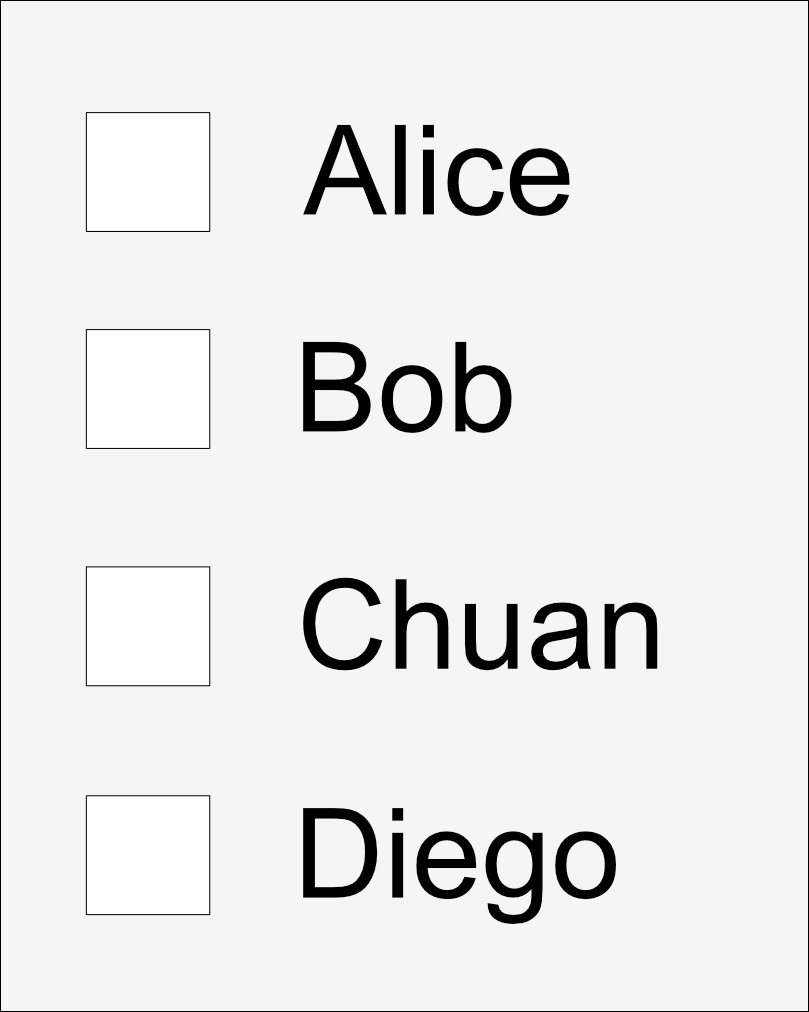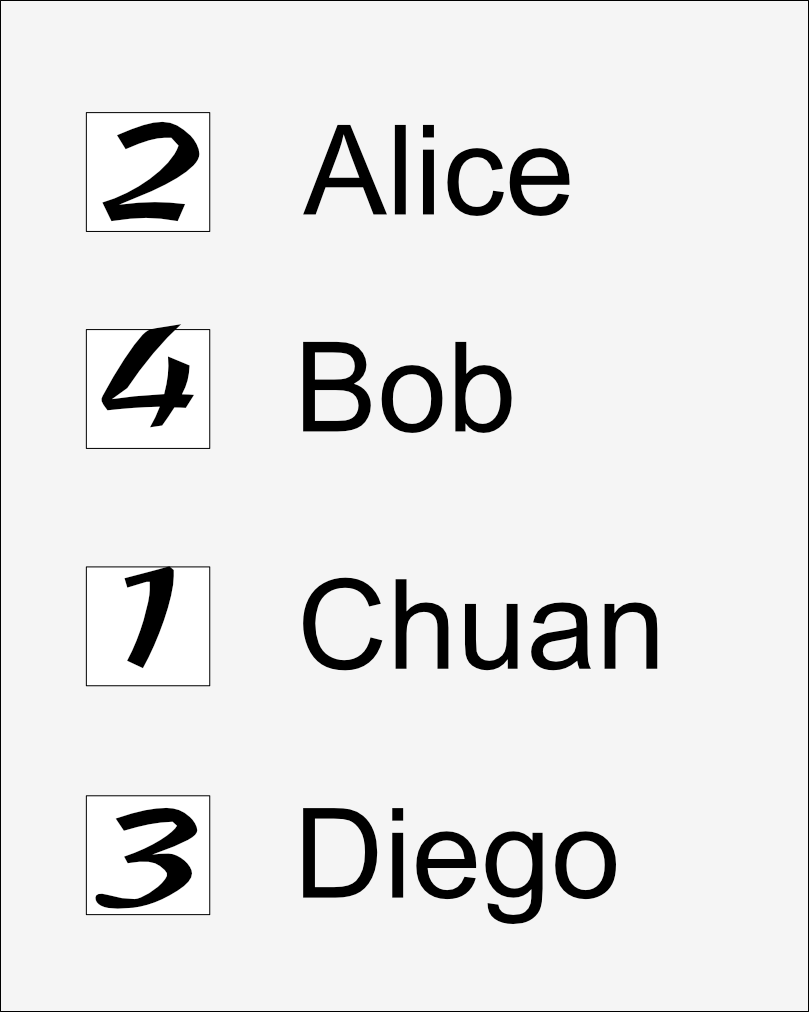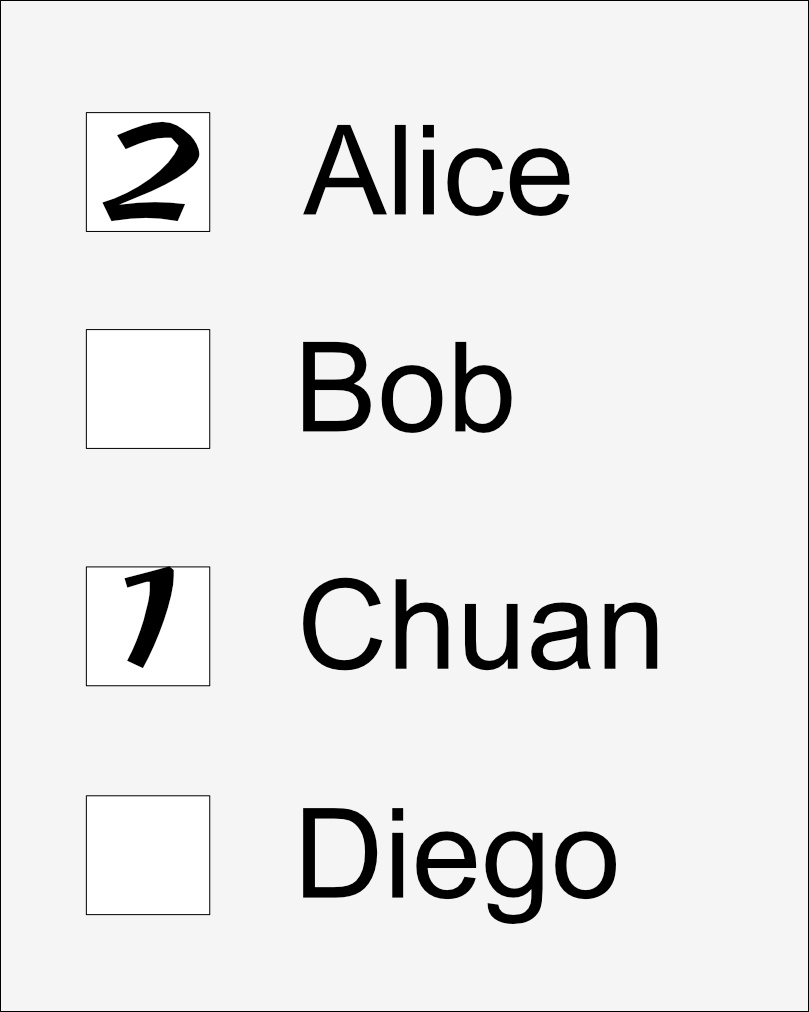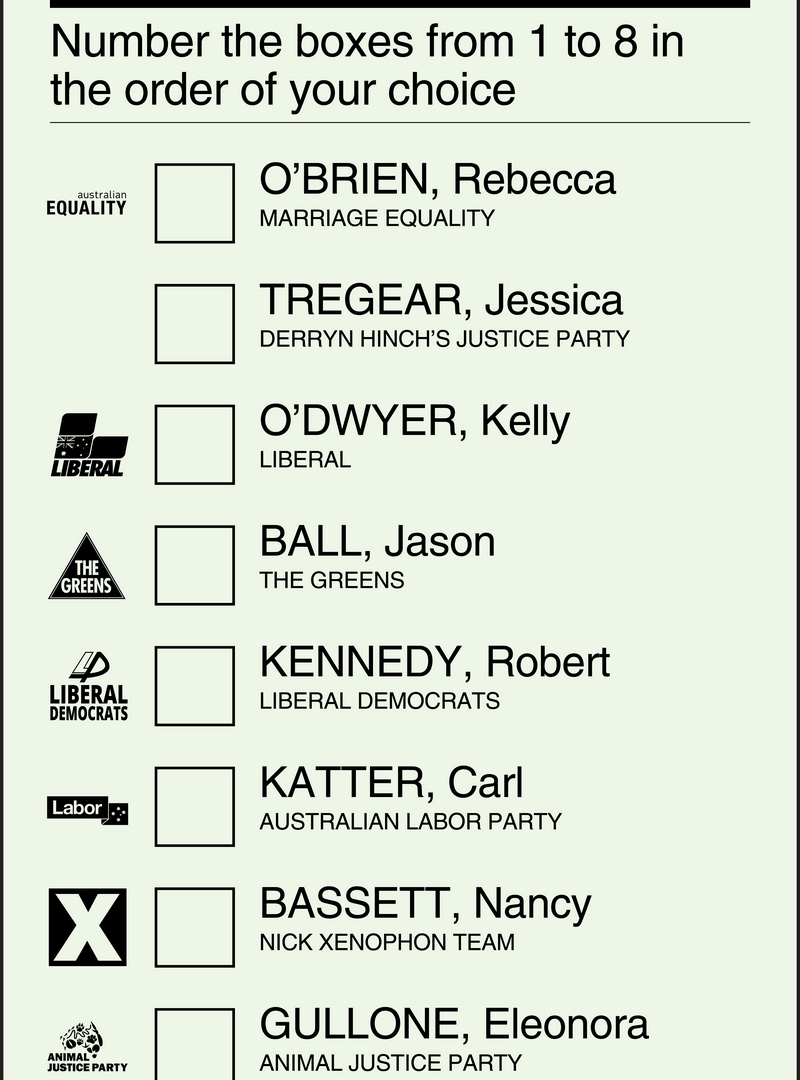Learn about Instant Runoff Voting
Instant Runoff Voting, or IRV for short, sounds like a very technical term. But, this is just the name we give to the system of preferential voting used to elect candidates to the Australian House of Representatives, and to the Legislative Assembly (lower house) in most states. This type of election system is not only used in Australia, but is increasingly being used in other parts of the world like the United States. In the United States, IRV is usually called ‘Ranked Choice Voting’ or RCV for short. This type of election is used to elect a single winner from a set of candidates.
Before we look at what Instant Runoff Voting is, let’s talk about preferential voting.
Preferential Voting
Preferential voting is widely used in Australia to elect candidates to represent us in the three levels of government — federal, state or territory, and local. In these elections, we vote by expressing our preferences over a set of candidates, parties, or groups of candidates.
For the Australian House of Representatives, and the lower houses of state parliaments, voters will see a list of candidates on their ballot. They will then be required to number these candidate in order of preference — putting a 1 in the box of the candidate they most prefer, a 2 in the box of their second-most preferred candidate, and so on, until they have put a number in each box. In some states, voters may only be required to rank a certain number of candidates, rather than all of them. It is important to make sure you know how to cast a valid vote in any election before you cast your vote!
How to vote
Information about how to vote, and how your vote is counted, is provided by the Australian Electoral Commission (AEC) for federal elections, and by your state or territory electoral commission for state and territory elections. The AEC provides information on preferential voting, and how to vote in the House of Representatives and Senate elections. The AEC also provides tools to help you practice filling out your vote.
Links to the electoral commission websites for each Australian state and territory can be found below:
- Northern Territory
- Australian Capital Territory
- Western Australia
- Queensland
- New South Wales
- Victoria
- Tasmania
Instant Runoff Voting by example
Let’s start by imagining an IRV election between four candidates, Alice, Bob, Chuan, and Diego. Each voter received a ballot listing these candidates, with a box next to each candidate for the voter to indicate their preference. Below, we show an example of what this ballot might have looked like before the voter filled out their preferences (left) and after (right). Each filled out ballot represents one vote.


Let’s imagine that there were twenty voters in this election, and that they expressed their preferences as shown below. The second column of the table defines a number of different preference orders over the four candidates. The first column indicates how many voters expressed that preference order on their ballot. In the first row, for example, the order Alice, Chuan, Bob, Diego indicates that four voters preferred Alice the most, Chuan the second-most, Bob the third-most, and Diego was least preferred.
| Number of voters | Preference Order |
| 4 | Alice, Chuan, Bob, Diego |
| 5 | Chuan, Diego, Bob, Alice |
| 6 | Diego, Bob, Alice, Chuan |
| 2 | Bob, Chuan, Alice, Diego |
| 2 | Alice, Diego, Chuan, Bob |
| 1 | Bob, Diego, Alice, Chuan |
To determine who has won, we start by giving each candidate all of the ballots on which they were ranked first. Alice is ranked first on six ballots, Bob on three, Chuan on five, and Diego on six. This represents the first preference tally for each candidate.
| Candidate | First preference tally |
| Alice | 6 |
| Bob | 3 |
| Chuan | 5 |
| Diego | 6 |
We then undertake a process known as the distribution of preferences. We start by identifying the candidate that has the smallest tally. In our example, this is Bob on three votes. Bob is now excluded, or eliminated, from consideration.
Sitting in Bob’s tally pile are two ballots whose next preference is Chuan and one ballot whose next preference is Diego. The two Bob, Chuan, Alice, Diego ballots go to Chuan, who now has seven votes –they had five to start with, and have now been given two more. The one Bob, Diego, Alice, Chuan ballot is given to Diego, who also now has seven votes.
The tallies of our candidates now look like this:
| Candidate | Tally |
| Alice | 6 |
| Bob | Excluded |
| Chuan | 7 |
| Diego | 7 |
Now, we again look for the candidate with the smallest tally. This is Alice, on six votes. We exclude Alice, and distribute the ballots in her tally to the next most preferred candidate on those ballots. The four Alice, Chuan, Bob, Diego ballots go to Chuan, while the two Alice, Diego, Chuan, Bob ballots go to Diego.
The tallies of our candidates now look like this:
| Candidate | Tally |
| Alice | Excluded |
| Bob | Excluded |
| Chuan | 11 |
| Diego | 9 |
We now have only two candidates left, and Chuan has the majority of votes. Chuan is declared the winner!
In this example, we were always able to give the ballots in an excluded candidates’ tally pile to their next most preferred candidate. Sometimes, the next most preferred candidate may have already been excluded. In this case, we skip over them to find the next most preferred candidate that has not yet been excluded. The ballot is then given to that candidate.
The process of distributing preferences under Instant Runoff Voting can be summarised as follows. Each candidate starts with a tally pile containing all the ballots on which they are most preferred (with a number 1 in their box). While no candidate has a majority of the total vote, we exclude the candidate with the smallest tally. All ballots in the excluded candidate’s tally are given to the next most preferred candidate that has not yet been excluded. Once we are left with only two candidates, or one candidate has the majority of the total vote, we can declare the candidate with the most votes as the winner.
Exhausted ballots
In some jurisdictions, voters will not be required to number every candidate on the ballot paper. They may be required to number at least a certain number. In the case where voters have to number every box, their ballot will always sit in someone’s tally pile throughout the entire process of distributing preferences. At the point where only two candidates remain, their ballot will sit in the piles of one of these candidates — the one that they most prefer. If a voter has only been required to number some of the boxes, it is possible that their ballot may exhaust at some point during the distribution of preferences.
Consider the following ballot.

This voter has only numbered two boxes, saying that they prefer Chuan the most, and then Alice. If Alice is excluded during the distribution of preferences, this ballot moves on to Chuan, if they have not yet been excluded. If Chuan has already been excluded, then the ballot exhausts — it sits in no candidate’s tally pile. Otherwise, if Chuan is later excluded, the ballot also exhausts.
It is important to note that if the rules for a given election require voters to rank all candidates, then the ballot shown above with only two ranks would be an invalid or informal vote.
Instant Runoff Voting around the world
The websites for Australia’s state, territory and federal election commissions are excellent resources for learning about how to vote in elections across our three levels of government, and how your vote is counted and used to determine who wins.
From the United States perspective, where IRV is generally called ‘Ranked Choice Voting’, the Ranked Choice Vote Resource Center highlights where IRV is being used around the world, arguments in favour of adopting IRV, as well as explainers on how it works and its history in the United States. FairVote is another US-based organisation with resources on the use of Ranked Choice Voting in the United States.
The Wikipedia article on Instant Runoff Voting highlights how this election system is used in Australia, the United States, and Ireland.


